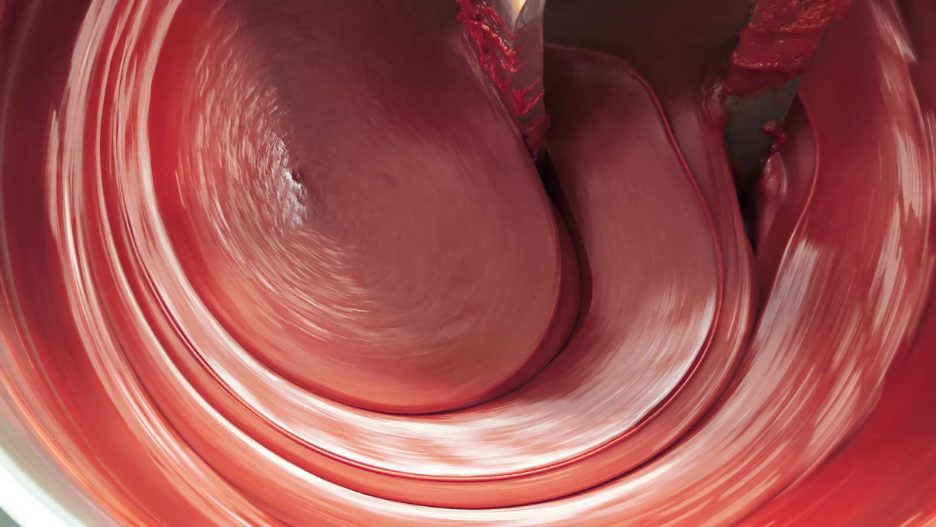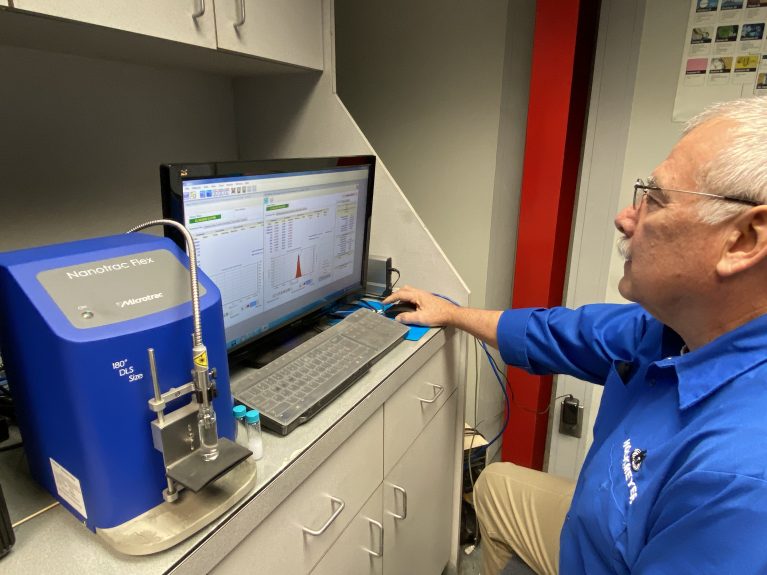When your goal is to create a uniform combination of two or more materials that don’t mix together easily, you have several options for which method of mixing you use. Two of the most effective options are high shear mixing and homogenizing.
High shear mixing vs. homogenizing: what’s the difference?
High shear mixers and dispersers are frequently used in a variety of industries, including the chemical, cosmetic, pharmaceutical, and food industries. Here at Hockmeyer, we offer varying degrees of high shear mixers, which are a popular choice for businesses requiring liquid mixers or laboratory mixers and employ a “flow-driven” process to achieve results. Made up of a stationary stator and an inside rotor, or impeller, that turns at high speeds, high shear mixers are often used for emulsification, homogenization, particle size reduction, and dispersion. Mixing speed required to achieve a uniform mix will depend on various properties of the ingredients, such as their viscosity.
By contrast, high pressure homogenization breaks down particles and creates a uniform substance by forcing substances through a narrow space. This method uses force in combination with high levels of pressure to create a consistent and uniform mix. Typically, the high pressure homogenization process is best suited for both micro and nano-emulsions.
The pros and cons of high shear mixing
Because high shear mixing makes use of variable speeds, this technique provides the ability to customize the amount of shear energy used for mixing applications. As a result, this technique can mix a substance, whether liquid or solid, into a material, with which it typically would not easily mix with.
High shear mixing often isn’t as speedy as homogenizing, but this processes’ higher flow can accommodate a wider range of viscosities, making it a great choice for applications including paint and ink mixing and emulsions for ceramics and adhesives. Also, high shear mixing generates heat, and it can negatively impact some temperature-sensitive mixtures, and require a cooling system for effective temperature control” in its place.
The pros and cons of homogenizing
Homogenizing is easily scalable, and it also uses multiple mechanical forces instead of one, which is the case for most mixing equipment. The results? A stable, uniform, and consistent product. This process is also faster than other mixing methods.
However, this process is not without its drawbacks. For many applications, the homogenizer will need to be cleaned after every use, a cumbersome and time-consuming process, and high-pressure homogenizers tend to be large and extremely heavy. Additionally, when working with high viscosity materials, high shear mixing will likely be a more efficient choice because if your materials contain too much solid matter the homogenizer could become clogged.
Which method and tools are right for your mixing needs?
Ready to learn more? Explore our range of high shear mixing equipment, including state-of-the-art blades like our
F – blade, which is interchangeable with all other manufacturer’s standard high shear blades and in fact, will last much longer and produce more sheer and pumping action. Or, take a look at our
D – blade, also known as the “Ring” blade, a patented Hockmeyer innovation that handles the toughest pigment agglomerates, rapidly dissolves resins, gums, and similar materials. Also be sure to consider our high shear mixers like the
rotor stator which utilizes a rotor and a stationary stator that typically operates at very high speeds, creating a vortex circulating the product through the gap between the rotor and stator, resulting in a very homogeneous dispersion.
Still unsure which machine will best meet your needs? The Hockmeyer team is here to help.
Contact us for more information about our products and how they can best serve you and your business needs.


